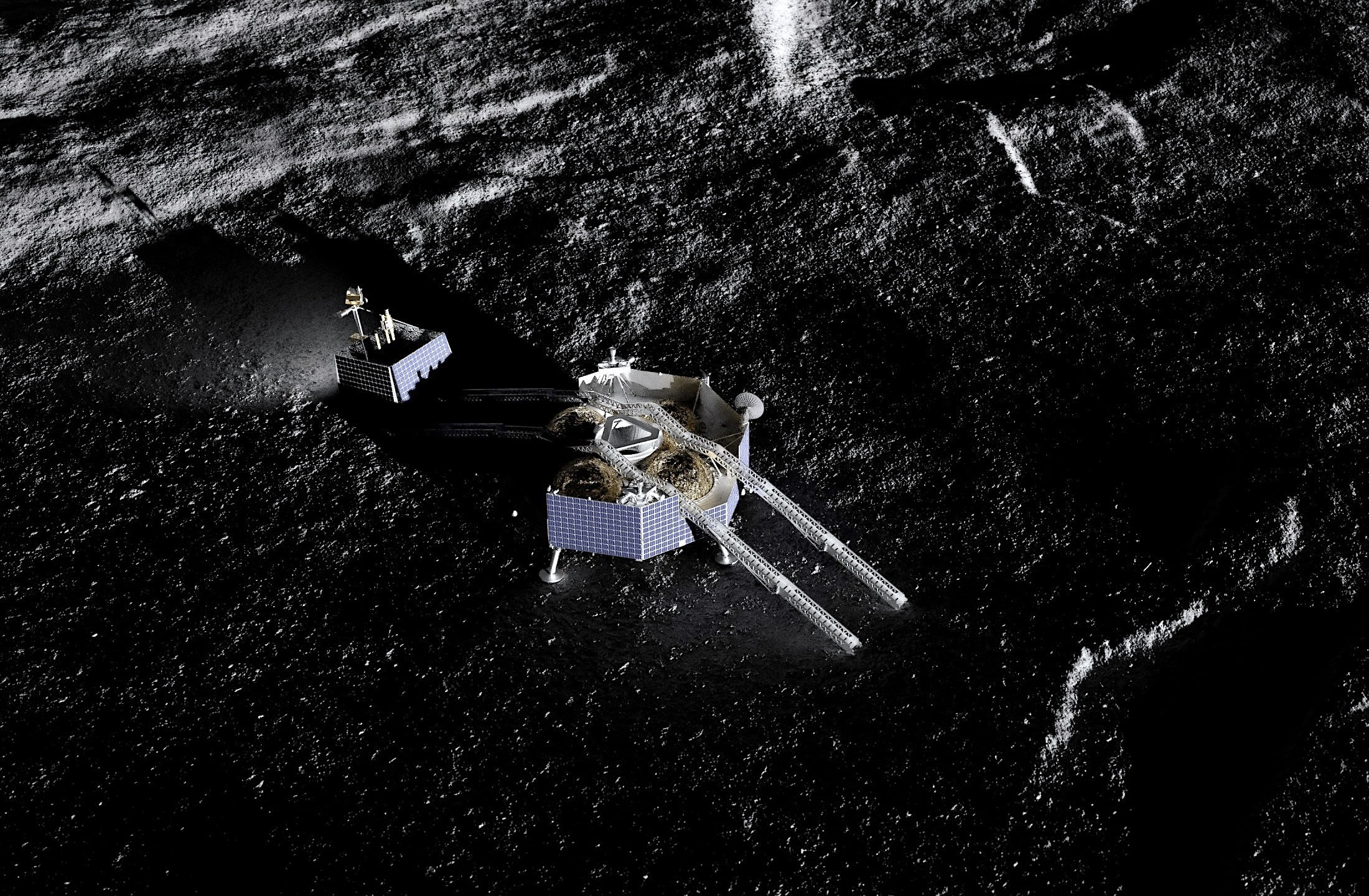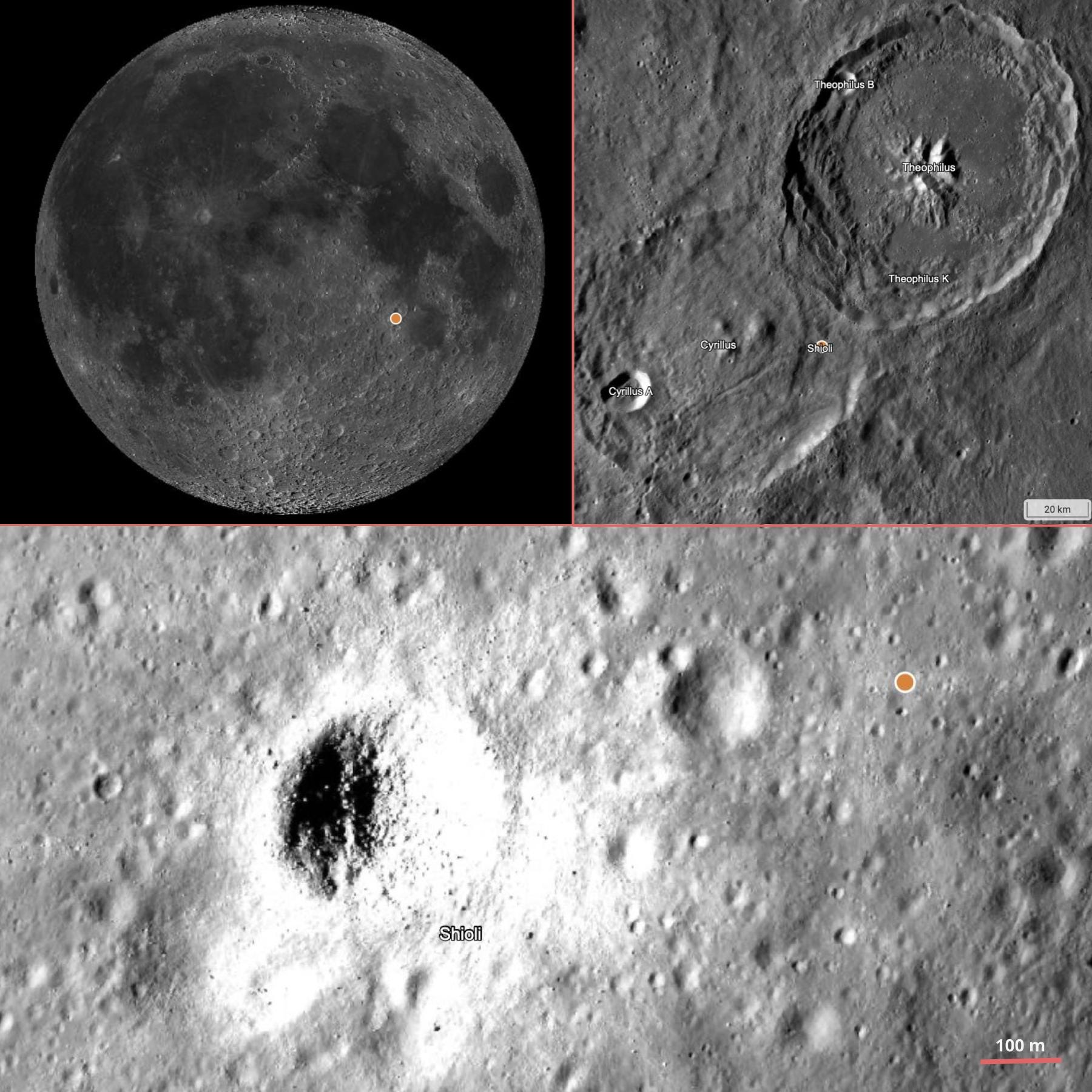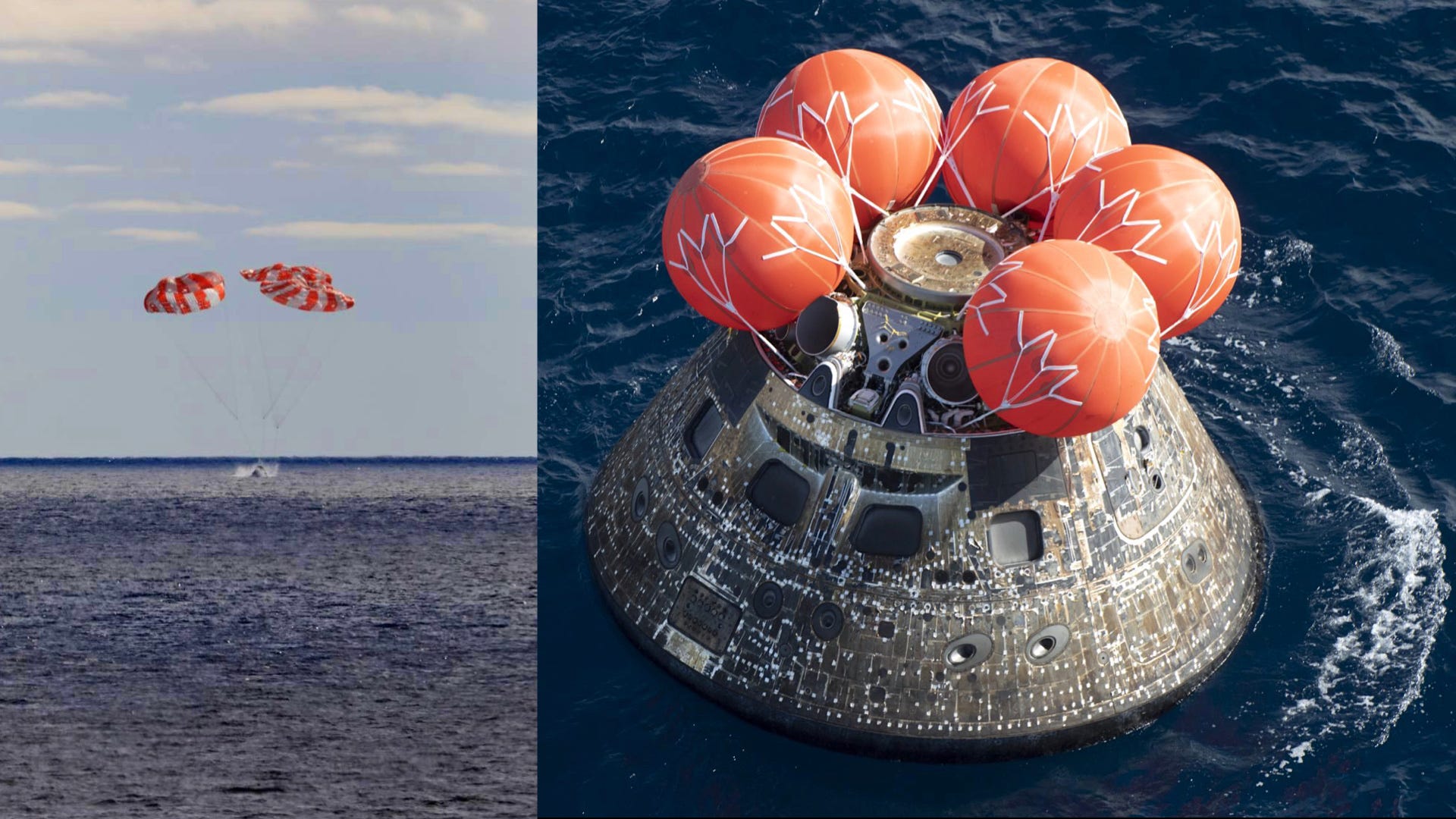Moon Monday #159: On Astrobotic’s failed lunar landing and its wake, mission updates, Artemis delays, and science from KPLO
An announcement before we begin this week’s Moon Monday: I’m honored and stoked to have been invited by the European Space Agency to deliver a talk on Chandrayaan 3 and India’s lunar ambitions at the Space for Inspiration event this Thursday, January 18. If you’re attending the event, feel free to connect. If you’re in Amsterdam this week and would like to meet to chat space, science, the Web, or writing, email me.
Astrobotic’s ailing lunar lander leaves behind a trail of transparency but also trepidation

After Astrobotic’s Peregrine Moon lander part of NASA’s CLPS program successfully launched to its intended high Earth orbit on January 8 aboard a ULA Vulcan rocket, it began communicating with mission control as expected. Unfortunately for the company, the spacecraft then began to tumble and thus lost its solar power generation capacity. Based on initial analysis, Astrobotic thinks a faulty valve part of Peregrine’s propulsion system caused high pressure helium to rush into and rupture the oxidizer tank. Mission operators have been using Peregrine’s small thrusters to keep the spacecraft’s solar arrays pointed towards the Sun and generate power. However, a skewed fuel to oxidizer ratio due to the propellant leak made any prolonged use of the main engine unfeasible, putting lunar orbital insertion and subsequent landing out of question for Peregrine.
With that it mind and the lander losing fuel, Astrobotic decided to switch on the payloads onboard, including NASA ones, to demonstrate the ability to operate them as well as collect and relay their data. But with the Moon not in Peregrine’s vicinity, achieving any of the intended scientific observations there isn’t possible. The lone exception is NASA’s radiation monitor onboard for which ongoing measurements in cislunar space constitute valid, relevant data too.
While Peregrine’s high Earth orbit was supposed to be stable, the propellant leak has caused deviations in a manner that will lead the spacecraft to enter Earth’s atmosphere on January 18 and burn up. Astrobotic says while it can avoid terrestrial reentry with the remaining propellent, the uncertainties introduced by the leak (and the eventual propellant loss anyway) risk having an uncontrollable spacecraft littering cislunar space. The company thus decided to let Peregrine incinerate in the atmosphere in which it was born. Astrobotic and NASA will provide more mission details in a media teleconference shortly after.
Ponder on Peregrine’s wake
Firstly, I’d like to publicly appreciate John Thornton, Alivia Chapla, Dan Hendrickson and the entire Astrobotic team for being promptly transparent to the world about the mission’s state throughout. As a private company, they didn’t have to do so but chose to anyway. Again, even tax-funded government space agencies haven’t been this forthcoming, case in point being the utterly opaque manner in which ISRO handled Chandrayaan 2’s crash landing in 2019. Between ispace’s also-transparent communications about its failed lunar landing and Astrobotic’s present efforts, the two companies have set an excellent precedence not just for the coming armada of robotic CLPS lunar landers but Moon missions at large.
Nevertheless, Peregrine’s failed Moonshot is another brutal reminder that space is hard, a phrase that simply refuses to become a cliché. It’s important to remember that Peregrine’s desired success was supposed to propel Astrobotic’s expansive lunar ambitions, which include operating a commercial lunar power grid and versatile autonomous rovers touting lunar night survival by end of decade. As such, Peregrine’s outcome has many (potential) implications for the company:
- Since Peregrine’s landing mission ended well before its descent could even begin, Astrobotic unfortunately couldn’t get any data from this critical phase to know how well the lander would’ve performed against engineered expectations. Such information would’ve been particularly useful to Astrobotic for its next CLPS mission, which intends to have a large, 5900-kilogram Griffin lander deliver NASA’s VIPER rover to the Moon’s south pole in November 2024 to directly study the nature of lunar water ice.
- Given VIPER’s more demanding landing constraints and its vitality in helping NASA plan future human missions to the Moon’s poles, the agency took a more conservative approach with VIPER compared to other high-risk, faster-reward CLPS deliveries. In 2022, NASA requested Astrobotic to delay VIPER’s delivery by a year, and contracted them $67.8 million to perform additional testing of Griffin to reduce risk. Eric Berger has previously reported that this includes more testing of Griffin’s propulsion system. It’s too early to say exactly how Peregrine’s failure will affect VIPER’s launch but definitely expect NASA to take actions that further reduce risk to the rover in one way or another.
- Astrobotic’s third Moon mission aiming for a touchdown on the Moon’s south pole in 2026 will likely get delayed. Peregrine’s outcome might also affect Astrobotic’s offering of satellite deployments to lunar orbit on said mission.
- Astrobotic’s aforementioned lunar ambitions intend to leverage everything the company has been building: landers, rovers, lunar solar panels, and wireless power delivery, which also means investing more to make sure every element works reliably. With Astrobotic having acquired Masten Space and its assets in 2022 and the company building a simulated lunar field for enhanced testing of Moonbound hardware, we will likely see Astrobotic further lean on better testing hardware for its future Moonshots. The trouble is that with its inherently limited resources compared to typical Moon missions by space agencies, this is going to be an expensive battle.
Mission updates

- On January 14, JAXA’s SLIM lander performed a circularization burn to enter the intended lunar orbit of 600 by 600 kilometers. On January 19, SLIM will reduce this orbit to 15 by 600 kilometers, after which it will attempt a 20-minute autonomous lunar descent on January 20 at about 12 AM JST (3 PM UTC on January 19). Will SLIM achieve its goal of a ‘pinpoint landing’? Watch the live stream on YouTube to find out.
- Andrew Jones reports that the four key modules of the 8200-kilogram Chang’e 6 Mooncraft arrived at China’s Wenchang spaceport on January 10. CNSA aims to launch Chang’e 6 on a Long March 5 rocket this May to bring about two kilograms of lunar samples from the Apollo impact crater on the Moon’s farside. These samples should be scientifically even more valuable than the Chang’e 5 samples as it would be our first tactile window into our Moon’s mysterious farside.
Many thanks to Epsilon3, Joseph Biernat, Sonia Tikoo and Arun Raghavan for sponsoring this week’s Moon Monday. If you love my work too, join them!
More Artemis delays

In a January 9 media teleconference, NASA Administrator Bill Nelson announced (inevitable) delays to upcoming crewed Artemis missions:
- Artemis II, which will carry four astronauts around the Moon and back, will now launch no earlier than September 2025 instead of end of this year. One of the key reasons for the delay is that NASA is still trying to understand the root cause of the unexpected erosion of some heat shield material on Artemis I’s Orion capsule. Another major reason is having to replace faulty electronics part of Orion’s life support systems responsible for removing carbon dioxide from the cabin.
- Artemis III, the first crewed Moon landing under the Artemis program, will now launch no earlier than September 2026, with its pacing items being SpaceX’s HLS Lunar Starship and its many pending milestones as well as Axiom Space’s AxEMU suits for astronauts.
- The uncrewed, pared down Lunar Starship that’s supposed to demonstrate a safe Moon landing before NASA lets SpaceX carry crew on Artemis III is also formally pushed out from this year to 2025.
Relatedly, a recent report from NASA’s Government Accountability Office concluded that the “complexity of human spaceflight suggests that it is unrealistic to expect the HLS program to complete development more than a year faster than the average for NASA major projects, the majority of which are not human spaceflight projects.” The report says Artemis III is more likely to launch in 2027.
While Lunar Starship’s slow progress will delay not just Artemis III but also Artemis IV, the larger perspective to consider here is Starship’s criticality to NASA’s long-term lunar plans that should make up for time lost—if done right.
Science observations by South Korean lunar orbiter going strong

Continuing the tradition of leveraging the unique vantage point of the Moon for astronomical observations, like the Chandrayaan 2 orbiter observing solar flares and Chandrayaan 3’s propulsion module studying Earth as an exoplanet, now South Korea’s first lunar orbiter KPLO has chimed in too with new mission results, Alexandra Witze reports:
But from its vantage point orbiting the Moon, it [KPLO] also detected γ-rays from elsewhere in space, said Kyeong ja Kim, a planetary scientist at the Korea Institute of Geoscience and Mineral Resources in Daejeon. That includes the brightest burst of γ-rays ever detected — an enormous blast from a galaxy 580 million parsecs (1.9 billion light years) away that washed over Earth in October 2022. Danuri [KPLO] also measured dozens of other γ-ray bursts coming from distant stars, as well as spikes in radiation created by storms on the Sun.
Since KPLO formally started its one-year primary mission to study the Moon’s surface in February 2022, the orbiter has delivered quite a few notable observations:
- Initial optical, polarimetric, and gamma-ray observations from its four indigenously developed instruments
- Unique observations of permanently shadowed regions on the Moon’s poles from NASA’s ultra-sensitive ShadowCam imager onboard to enable planning of future resource prospecting missions.
- A new look at the ‘swirl’ of Reiner Gamma
